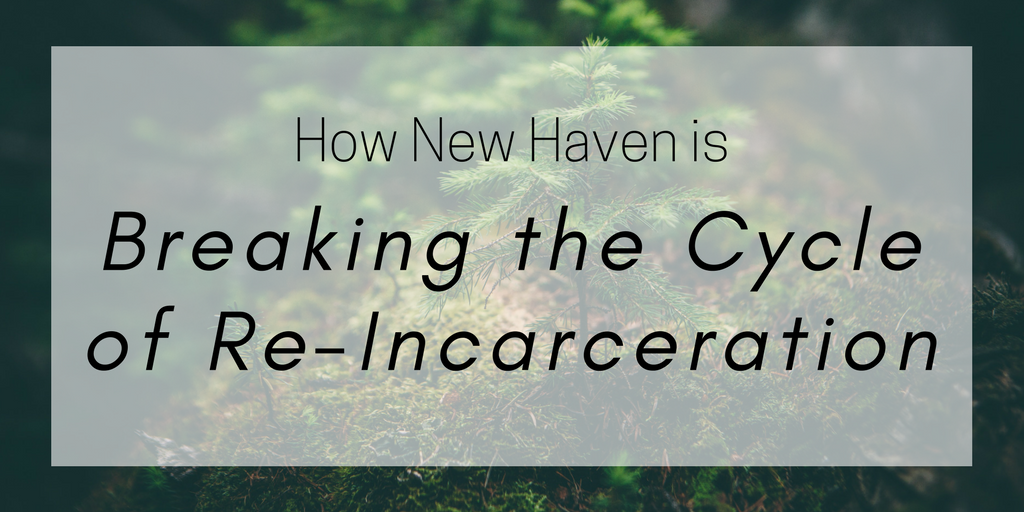Part 1 in a Series
Of the 16,286 men and women released from Connecticut Department of Correction custody in 2008, 64% were rearrested within the next three years. Mary Loftus, one of the newest members of the Veoci team, has been working with the
(WKRP) for the past six years to decrease the recidivism statistic. She’s doing more than focusing on just numbers, though— she’s helping people change their lives. We had a chance to speak with Mary about the great work WKRP does for the New Haven community, her passion for reentry services, Veoci’s role in the process, and what still needs to be done.
“They have to want it. It all depends on the motivation of the person coming out of jail.”
What is recidivism?
Recidivism is a relapse into criminal behavior, measured by rearrest, reconviction, or return to prison. While Connecticut’s recidivism rate may seem high, it is on par with the national average. One study tracked 404,638 individuals from 30 states who had been released from prison in 2005. Within three years, around 68% were rearrested.
Within five, the percentage had risen to 77%. There are many factors that contribute to the high rates of recidivism including addiction, mental illness, inaccessibility of treatment, lack of a healthy support system, and a refusal from employers to hire those with prison-time in their background.
In October 2015, Connecticut was awarded $2.3 million in federal grants under the Second Chance Act Adult Reentry program. $1 million of the grant was allocated to The Warren A. Kimbro Project, a program that helps individuals rebuild their lives after being released from prison. It’s fully voluntary. “They have to want it,” Mary says. “It all depends on the motivation of the person coming out of jail.” To be eligible, a person must be from New Haven, returning to New Haven, have a medium to high risk of recidivism, and be between the ages of 18 and 24 (or 25 and 49 with a chronic health condition). WKRP begins working with individuals while they are still incarcerated, 3 to 12 months before they are set to be released. Learn more about WKRP through our
about the program.
What are the most important resources to provide in order to break the cycle of re-incarceration?
“Most people are couch surfing; they’re living here to there, living in homeless shelters. It’s extremely hard to get a job when you’re homeless.”
Employment & Housing
Employment and housing, Mary says, are two of the most crucial resources for the recently-incarcerated. They are also two of the hardest to get. Most employers do background checks, and will not hire people with a criminal past. However, Connecticut has now ”

Substance Abuse Treatment
Another critical resource is substance abuse treatment. This is an area where there is further work to be done within New Haven, Mary notes. “I find that there’s a lack of appropriate substance abuse treatment. There are a lot of great programs out here that do treatment, don’t get me wrong. But if someone thinks they need inpatient treatment because outpatient treatment isn’t going to work for them, unless they’re intoxicated, they’re not going to be let in.”
This is highly unfortunate as an increase in admissions to substance abuse treatment is associated with lower crime, incarceration and re-incarceration rates. According to a Delaware Work Release study, 70 percent of individuals in prison-based drug treatment and corresponding aftercare remained arrest-free after 3 years compared to just 30 percent of the individuals that did not receive treatment.
Support System
A strong support system is another important aspect of a comprehensive post-incarceration plan. WKRP has a weekly men’s support group run by their community advocate that has been very successful. “It’s great to have a meeting place for men who have been incarcerated and are now trying to get their lives back together. It’s useful for job links, and just for support,” Mary says. “A person can come in and talk about what they’re feeling and other people in the room have been through the same or similar thing. It really helps.”
â€
Those at the Warren A. Kimbro Project work around the clock to provide individuals with links to employment opportunities, housing options, substance abuse help, and support systems. Veoci wants to thank WKRP for helping our community in a tangible way.
Further blog posts detailing WKRP’s partnership with Veoci and Mary’s stand-out success stories coming soon. Part 2 will be about what Mary has found to be the most effective Veoci features to aid with reentry services.
Sources: Recidivism in CT Report, 2008 Releases
New Haven Program helps with challenges of returning to city after prison








